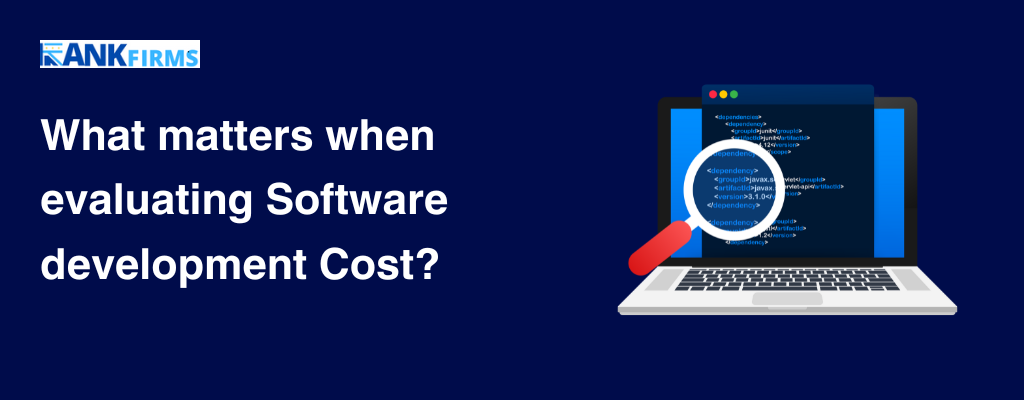Project success hinges on accurately estimating both cost and time requirements. These estimates serve as a roadmap, guiding financial resource allocation, team structure, and overall project execution. Precise cost estimates ensure projects stay within budget, preventing financial strain and ensuring efficient use of resources.
Cost and time estimates are cornerstones of efficient project management. They establish baselines for tracking progress, identifying deviations, and fostering clear communication with stakeholders. Ultimately, accurate cost and time estimates set the stage for successful project delivery, avoiding surprises and ensuring value for all involved.
But, what is estimating project cost and time?
Estimating project cost and time means forecasting the financial resources and duration required to complete a project successfully. It involves analysis of various factors and translating them into a realistic timeline and budget.
Time Estimation:
This involves determining the expected time of the project completion and creating a timeline. It considers factors like:
1. Project Scope:
The complexity and size of the project deliverables.
2. Team Expertise:
The skills and experience of the team members assigned to different tasks.
3. Project Dependencies:
Identifying tasks that rely on the completion of others, impacting the overall timeline.
4. Resource Availability:
Ensuring team members and resources are available when needed.
However, time and cost work parallel, yet this article is focused on cost estimation, its crucial factors, challenges, and project estimation methods.
How To Estimate The Cost Of Software Development?

1. Average Cost Range:
It’s important to understand that software development costs vary widely depending on the project specifics. However, a basic mobile app development might range from $50,000 to $100,000, while a complex enterprise system could cost anywhere from $100,000 to $1 million or even more.
On the other hand, system configuration management software development may range from $100,000 to $300,000.
Note: Remember, these are just ballpark figures. The most accurate way to estimate your software development cost is to consult among the best mobile app development companies. They can assess you with your project requirements and provide a more tailored cost estimate.
The aforementioned average cost range was just an overview. In order to define the cost estimation, there are several methods for it. Let’s learn them!
6 Powerful Project Estimation Methods for Success:

Accurately estimating project costs and timelines is critical for smooth execution and achieving project goals that most software development companies follow. Here are 6 successful methods to consider:
1. Top-Down Estimation:
Overview:
This approach starts with a high-level view of the entire project. Project managers or stakeholders estimate the total project budget and timeline based on experience, industry benchmarks, or similar past projects.
Benefits:
Offers a quick and initial estimate, suitable for early project planning and securing high-level approvals.
Drawbacks:
This method is imprecise as it doesn’t account for detailed project tasks. Hence it can lead to underestimation if not refined later.
2. Bottom-Up Estimation:
Overview:
This method involves a more detailed breakdown. The project is divided into smaller, well-defined tasks. Each task’s time and cost are estimated individually and then those estimates are summed up to create the overall project estimate.
Benefits:
Provides a more accurate and granular picture of project costs, as individual tasks are considered.
Drawbacks:
This method can be time-consuming to break down large projects and estimate each task. To make it effective it requires a well-defined project scope.
3. Three-Point Estimation:
Overview:
This technique builds upon bottom-up estimation by incorporating statistical analysis. For each task, you estimate three possible durations: optimistic (best-case scenario), pessimistic (worst-case scenario), and most likely (realistic scenario).
Benefits:
Provides a range of potential outcomes, accounting for uncertainties. This method helps identify potential risks and allows time to buffer the overall estimate.
Drawbacks:
Requires additional effort compared to simpler methods. Accuracy relies on the expertise of those making the estimates.
4. Comparative or Analogous Estimation:
Overview:
This method leverages historical data from similar projects that have already been completed. Costs, timelines, and resource allocation of past projects are compared to the current project to establish a baseline estimate.
Benefits:
Offers a quicker approach for projects with similarities to past endeavours. Provides a realistic starting point if historical data is reliable.
Drawbacks:
This method’s accuracy depends on the availability and relevance of comparable projects. It may not account for unique aspects of the current project.
5. Parametric Estimating:
Overview:
This method uses statistical relationships between historical data and specific project characteristics. For instance, estimating costs based on the number of lines of code or functionalities delivered.
Benefits:
Provides a relatively quick and objective method for estimating based on historical benchmarks. Useful for projects with well-defined parameters.
Drawbacks:
Requires access to reliable historical data and relevant industry benchmarks. This method may not be suitable for highly customised projects.
6. Expert Judgment:
Overview:
This approach relies on the knowledge and experience of project managers, domain experts, or consultants. These individuals use their expertise to estimate project costs and timelines based on their understanding of the project scope and industry trends.
Benefits:
This method can be valuable in businesses where historical data is limited or the project is too complex. Leverages the experience of professionals.
Drawbacks:
Accuracy depends on the expertise and objectivity of the individuals making the estimates. This method can be subjective and prone to bias.
These were the methods that were defined as per different project needs. Let’s understand the key factors responsible for unparalleled cost and time for any project.
Key Factors Influencing Software Development Costs

The cost of developing software by IT services companies can vary significantly depending on several critical factors. Understanding these factors empowers you to make informed decisions and achieve your project goals within budget. Here, we delve into the eight key aspects that shape your software development costs:
1. App Complexity Levels:
Language & Framework:
The chosen programming language and development framework can impact costs. Less common languages require hiring developers with specialised skills, which can command higher rates. Similarly, complex frameworks involve steeper learning curves, extending development time.
Features & Functionality:
The richness and complexity of features directly affect development efforts. A simple app with basic functionalities will cost less alternatively, a feature-packed application with intricate functionalities.
UX/UI Design & Customization:
A polished and user-friendly interface requires skilled designers and UI/UX experts. The level of customisation desired from basic layouts to highly tailored user experiences, influences the design effort and cost.
Supporting Documentation:
Comprehensive documentation outlining the software’s functionality, architecture, and usage is crucial for future maintenance and updates. The extent of documentation required will factor into the overall project cost.
2. Project Type:
The type of project you undertake plays a role in determining the development approach and resource allocation:
Software Development:
Building a new software application from scratch involves the full development lifecycle, from concept to deployment. This typically requires the most extensive development effort and resources.
Software Modification:
Modifying an existing software application usually involves less work than developing software from scratch. However, the complexity of the modifications and the underlying codebase can influence the cost.
Web Development:
Developing a website can range from simple brochureware to complex web applications. The level of interactivity, database integration, and e-commerce functionality all affect the cost.
3. Project Size:
The sheer size of your project offered to iOS or Android app development companies, measured by the number of features, the complexity of functionalities, and development time, directly correlates to cost. Larger projects necessitate more development hours, requiring a larger team or extending the development timeline.
4. Business Requirements:
A clear understanding of your business needs is vital for accurate cost estimation. Here’s what to consider:
Current Pain Points & Goals:
Identifying the problems your software aims to solve and the objectives you hope to achieve set the project roadmap and influences the required features and functionalities.
Resource Needs:
Define the resources needed for development, such as the number of developers, designers, testers, and project managers. This will impact the overall project cost.
Delivery Stages & Milestones:
Establish clear delivery stages with defined milestones. Breaking the project into manageable phases allows for better cost control and progress tracking.
Target Audience:
Understanding your target audience and their specific needs helps tailor the software’s features and functionalities, impacting development complexity and cost.
Project Constraints:
Identify any limitations to understand the budget, timeline, or available resources. These constraints will influence the scope of the project and development approach.
Stakeholders:
Involving key stakeholders throughout the process ensures everyone is aligned on project goals and expectations. This fosters smoother communication and helps manage project costs effectively.
Potential Risks:
Identifying and mitigating higher risks like technical challenges, scope creep, or delays can prevent unexpected cost increases.
Software Solution Requirements:
Define the specific functionalities and features your software solution needs to deliver. This clarity helps estimate the development effort and resources required.
Return on Investment (ROI):
Consider any anticipated return on investment from your software. This helps assess the project’s value proposition and justify the associated development costs.
5. Development Platforms:
The choice of platform (web, mobile, desktop) influences the development process and tools used. Building for multiple platforms often requires additional development effort and expertise, leading to higher costs. Cloud-based solutions can incur platform-specific fees that factor into the overall cost.
Also Read: The Best Software Development Frameworks of 2024
6. User Experience (UX) and User Interface (UI) Customization:
A high level of customisation in UX/UI significantly impacts development time and cost. Creating a bespoke user experience with unique design elements requires more design resources and development effort contrasted using pre-built templates or UI libraries.
7. Integration with Systems & APIs:
Integrating your software with existing systems or external APIs adds complexity to the development process. The effort involved in data exchange and ensuring compatibility with other systems will influence the cost.
8. Team Size & Developer Salaries:
The size and composition of your development team directly affect the overall cost. Hiring a larger team with diverse skill sets allows for faster development but naturally incurs higher expenses. Additionally, developer rates vary depending on location, experience level, and the specific skillsets required for your project.
By carefully considering these key factors, you can get a clear picture of the potential costs associated with your software development project. This empowers you to make informed decisions during the planning phase. Here are some additional tips to optimise your software development budget:
Prioritise Features:
Identify the core functionalities essential for your MVP (Minimum Viable Product) and focus on developing those first. This allows you to launch your software sooner and gather user feedback to refine features in future iterations, potentially saving development costs.
Embrace Agile Development:
Agile methodologies promote iterative development cycles with ongoing client feedback. This allows for course correction and adjustments to the project scope as needed, potentially minimising wasted development effort and keeping costs under control.
Leverage Open-Source Technologies:
Utilizing open-source libraries and frameworks is relatively a cost-effective approach for specific functionalities. However, ensure proper evaluation of licensing terms and ongoing maintenance requirements.
Outsource Strategically:
Consider outsourcing specific development tasks or hiring freelance developers for areas requiring special expertise. This can be a cost-effective way to access a wider talent pool without incurring full-time employee expenses.
Transparent Communication:
Maintain open and transparent communication with your development team throughout the project. This fosters trust allows for early identification of potential cost overruns, and enables proactive adjustments to stay within budget.
Also Read: Top 10 FAQs before hiring software development company
In a Summary –
Estimating the cost of software development can be a complex task, if you understand the factors that influence the development cost, you can easily estimate it. Remember:
1. Project Scope and Complexity:
The size and intricacy of your software significantly impact the cost. Large and feature-rich applications naturally require more development hours and resources, leading to higher costs.
2. Team Location and Rates:
Developer rates vary depending on location and experience. Hiring a team in a region with a high cost of living will generally incur more expense, than a team in a more affordable place.
3. Development Methodology:
The chosen development approach (e.g., Agile vs Waterfall) can influence the cost structure. Agile development often involves iterative cycles with ongoing client feedback, which may lead to some cost adjustments.
4. Technology Stack:
The specific programming languages, frameworks, and tools used in development can affect the cost. Some technologies require specialised skills that command higher rates.
5. Project Duration:
The overall development timeline is a factor. Longer development periods typically translate to higher costs due to accumulated labour hours.







